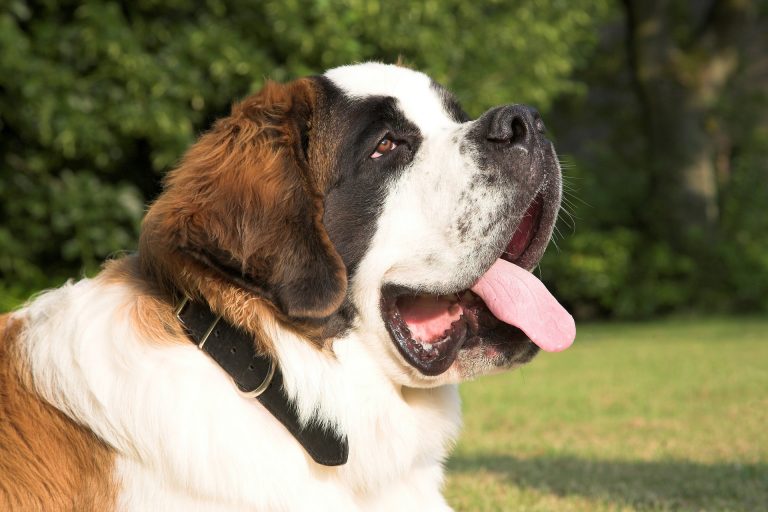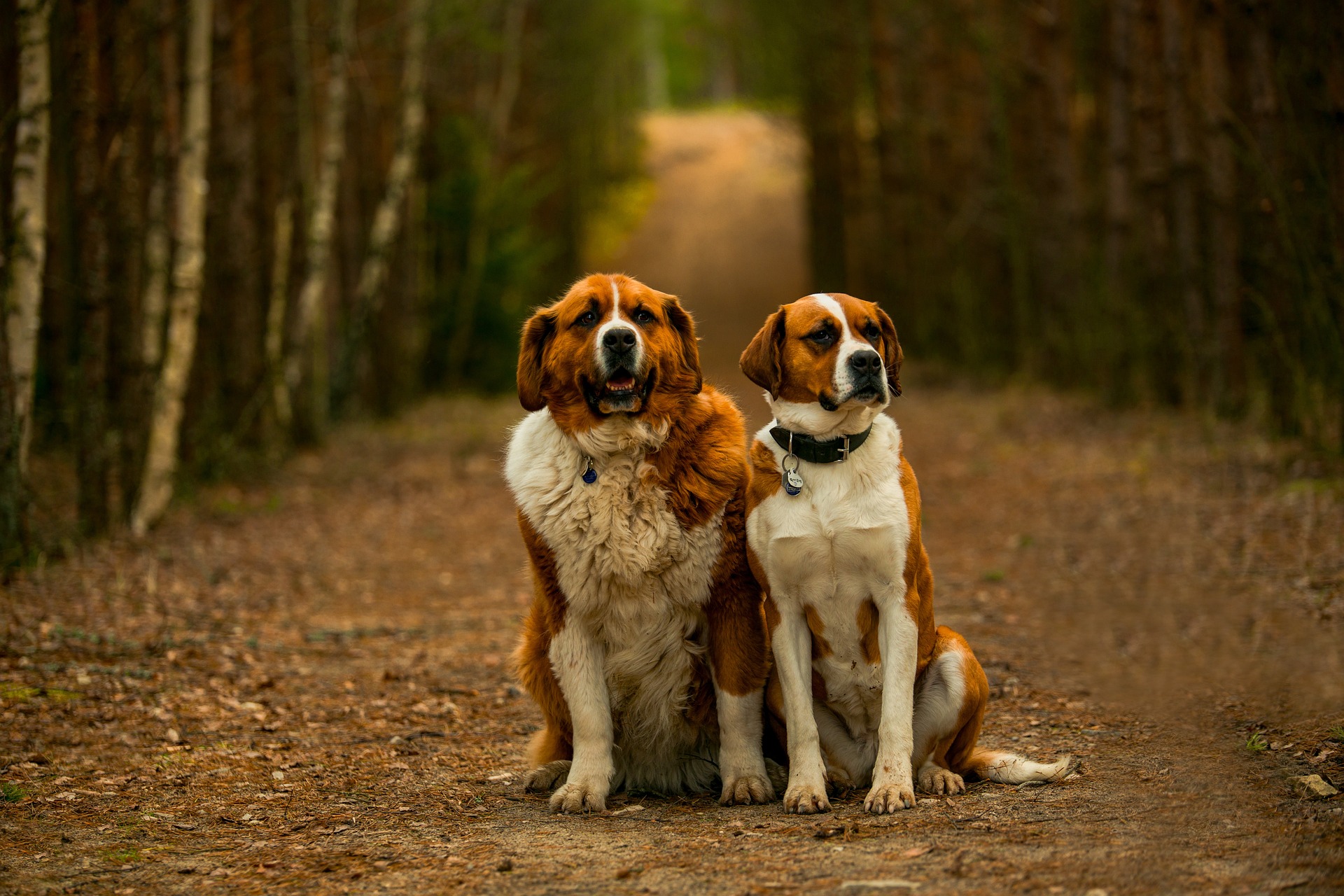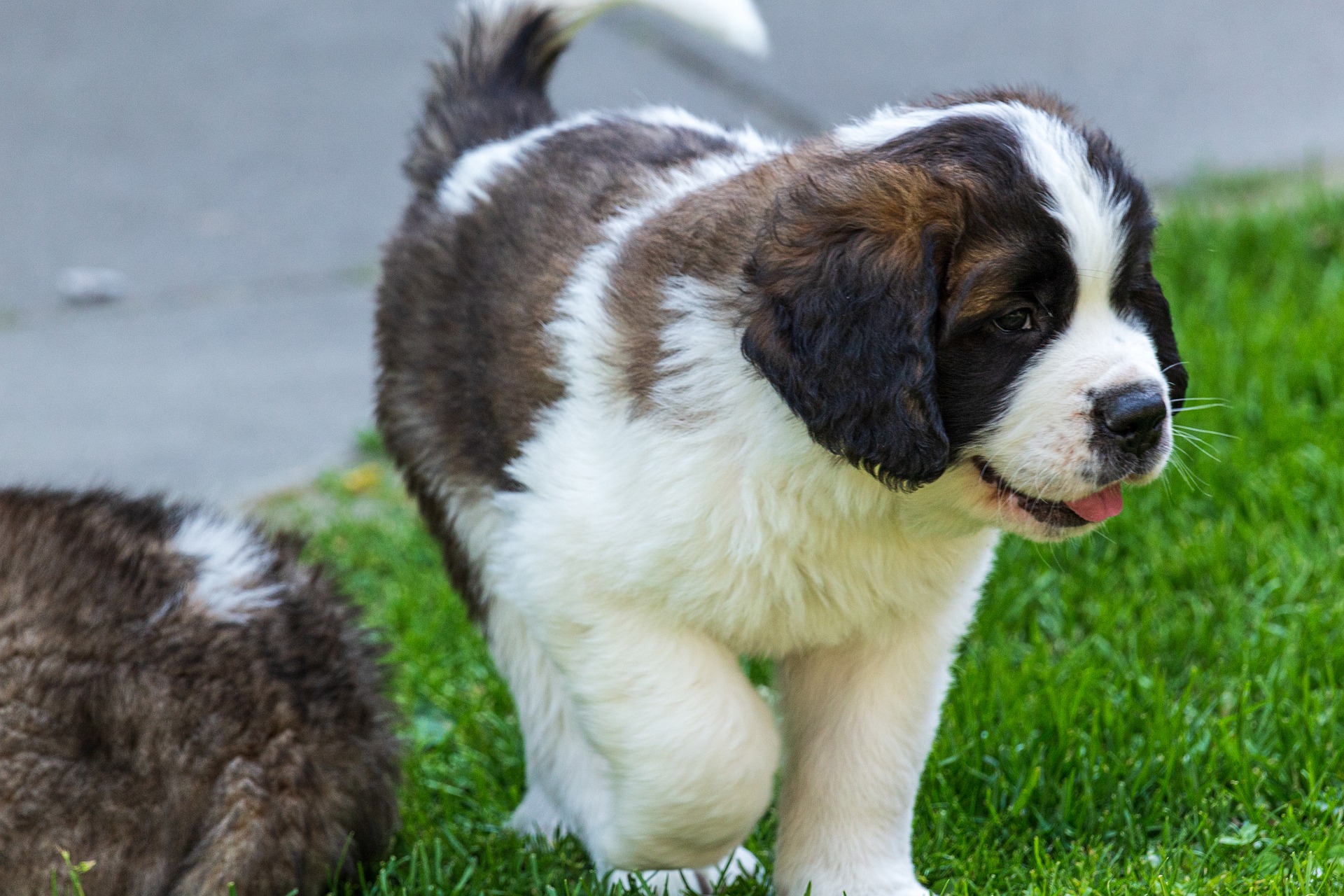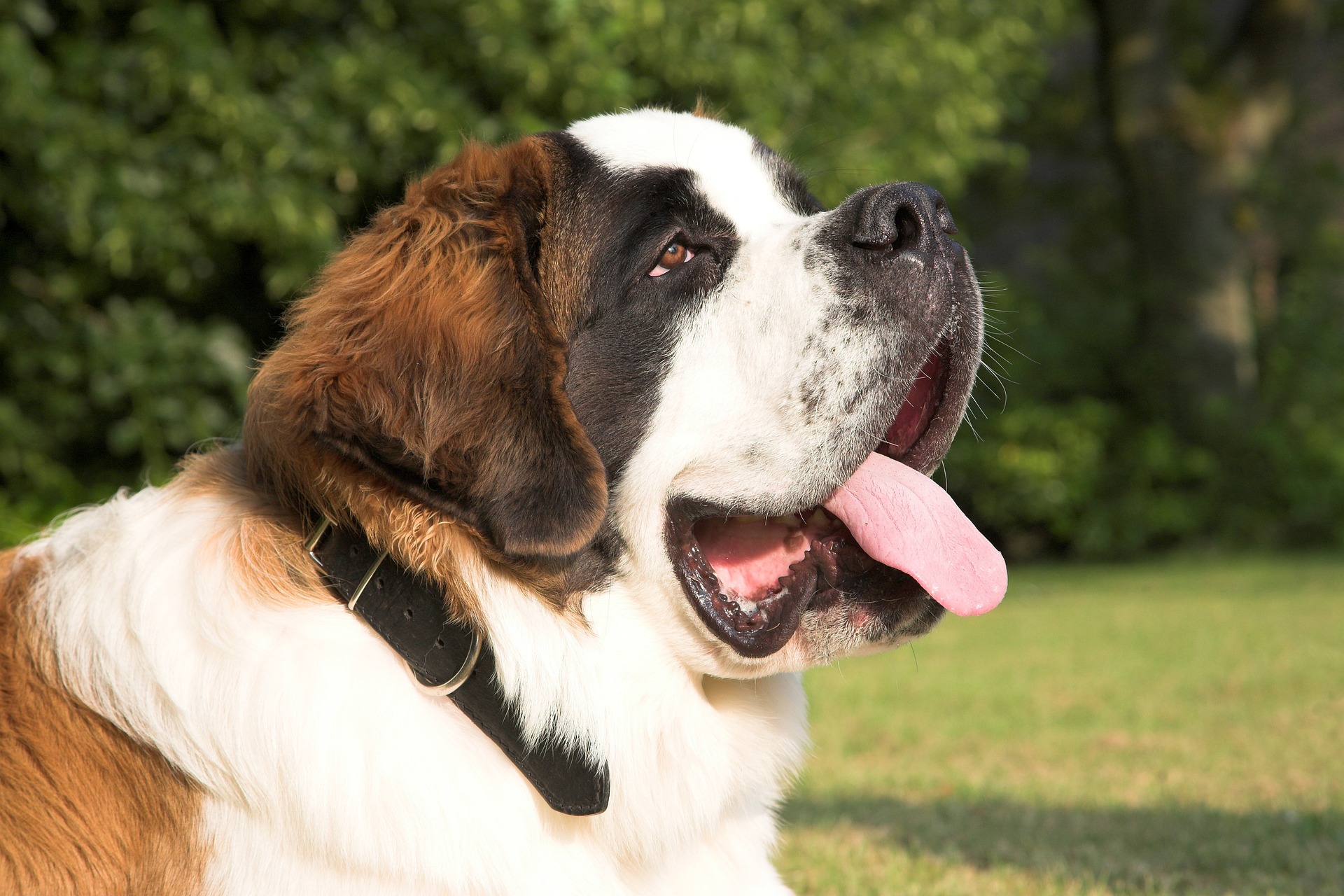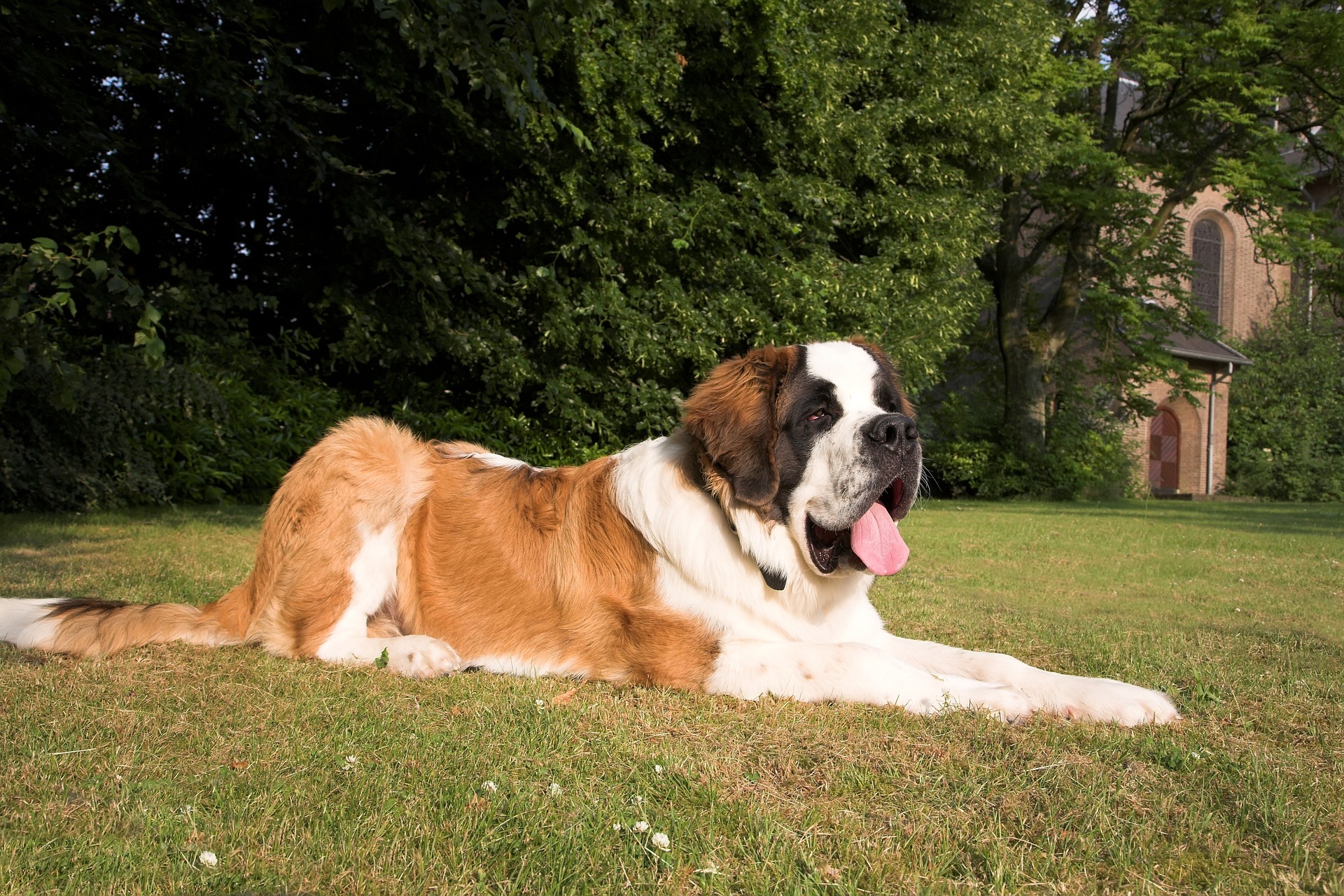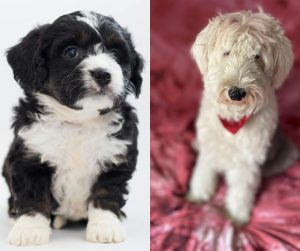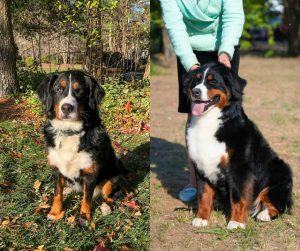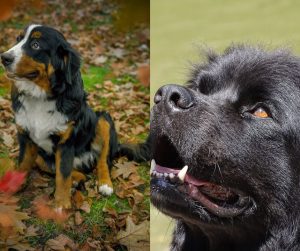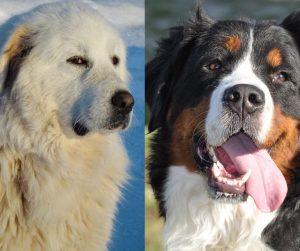Saint Bernards, often known as gentle giants, come in a vibrant palette of colors that not only delight the eyes but also tell a story of their rich origin from the Swiss Alps.
As family pets, these large and affectionate dogs are clothed in a coat that ranges from the standard white with red to more rare hues.
Each color variant has its own connection to the breed’s history and can offer insight into the dog’s personality and breeding.
Understanding the various colors found in the Saint Bernard breed is more than an exercise in aesthetics; it’s a dive into the breed’s unique genetics and the care required for maintaining their luxurious coats.
Analyzing their standard colors and markings reveals the careful selection by breeders over generations, ensuring the breed’s characteristics remain true to their rescue dog roots. Let’s take a deeper look at the Saint Bernard colors.
This robust breed, heralded for its unparalleled companionship, exhibits a remarkably diverse array of coat colors, each associated with specific breed standards that are reflective of the dog’s stature and distinctive presence.
Key Takeaways
- Saint Bernards come in a variety of coat colors, each with historical and genetic significance
- These gentle giants are beloved as family pets for their friendly disposition and unique appearance
- Proper care and knowledge of the breed’s standards are essential for maintaining their health and distinct coat colors
History and Origin
The Saint Bernard’s vivid history is as rich as its coat colors, taking us back to the rugged terrains of the Swiss Alps.
Their evolution from mountain rescue dogs to beloved family pets is a testament to their versatility and enduring appeal.
Origins in the Swiss Alps
Saint Bernards trace their origin to the Swiss Alps, where they were originally bred by monks at the Hospice of the Great St. Bernard Pass, a treacherous mountain pass crossing between Switzerland and Italy.
Their main role was to help locate and rescue travelers who found themselves trapped or injured in these harsh conditions.
These heroic canines became synonymous with Alpine rescue due to their incredible strength, direction sense, and resistance to cold. The dog is closely related to the Bernese Mountain Dog and Greater Swiss Mountain Dog. They all derive from the Swiss Alps.
Breed Development and Recognition
Over the years, the breed has gained recognition across the globe. They were refined and standardized, leading to recognition by major canine organizations.
Specifically, the American Kennel Club (AKC) acknowledged the Saint Bernard in 1885, the United Kennel Club (UKC) gave recognition in 1928, and they were also recognized by the Fédération Cynologique Internationale (FCI), an international canine organization.
These affirmations established the breed’s traits and characteristics, ensuring the Saint Bernard’s legacy and consistent breed quality.
As they spread from Switzerland and captivated hearts worldwide, these gentle giants became well-known not only for their heroic origins but also for their amiable nature as family companions.
Standard Colors and Markings
When discussing Saint Bernard colors and markings, they really do have their own unique wardrobe.
These gentle giants come draped in a variety of colors that adhere to breed standards, and their markings only add to their distinctive charm.
Recognized Coat Colors
The Saint Bernard dog breed has a rich palette of coat colors recognized within breed standards. Here’s a glimpse into their colorful array:
- Red and White: The quintessential Saint Bernard color, exhibiting a warm red with white
- Brown and White: A beautiful contrast of earthy brown paired with pure white
- Mahogany and White: Deep mahogany shades mingle with white, offering a majestic appearance
- Orange and White: A rarer combination, where a softer orange blends with white
- Rust and White: This variant has a rustic appeal with rust hues set against white
- Brindle Grizzle: A striking pattern of brindle stripes over a grizzled base
Other hues like black may appear within the coat, but purely black and white Saint Bernards are particularly rare and not a standard coat color. The recognized colors ensure a Saint Bernard’s look is as standardized as their size and temperament.
Common Patterns and Markings
Apart from their coat colors, Saint Bernards are known for their distinctive patterns and markings, which include:
- Black Mask: This refers to a black coloring over the face, which accentuates their expressive eyes and creates a striking contrast
- White Markings: Traditionally, white should appear on the chest, feet, and tip of the tail. A white noseband, collar, or spot on the nape, and a blaze are also typical
- Piebald: A pattern where white is the base color with spots or patches of another color
These markings play a crucial role in the breed’s signature look. It’s not just about the color but how it’s artistically splashed across their fluffy canvas, adhering to the breed standard and enhancing their amiable expressions.
Breed Characteristics and Personality
When thinking about the St Bernard dog breed, his personality is as grand as his size. He’s known for being a remarkably gentle and affectionate family member. Below, we’ll explore the Saint Bernard’s temperament and behavior with family, which are central to understanding this gentle giant.
Temperament
Saint Bernards are the embodiment of a gentle giant. They exude a calm and patient temperament, typically showing an amiable and kindly disposition.
Gentle by nature, they thrive in environments where they can express their loyal and friendly character.
Despite their size, they’re often good with children, displaying a protective yet tender attitude. These dogs are not known to be aggressive, making their demeanor suitable for families.
Their composure should not be mistaken for laziness; they can exhibit an enthusiastic personality when engaged in activities. However, they may not have the high energy of some smaller breeds, preferring leisurely strolls to vigorous exercise.
Behavior with Family
Within the family unit, the Saint Bernard’s behavior anchors in loyalty and affection. They are quintessential family dogs, often forming strong bonds and exhibiting deep devotion to their human companions.
This large breed is protective but not overtly so, making him a good watchdog who will alert its family to anything unusual without being excessive.
In the presence of children, Saint Bernards are usually watchful and patient.
Their large size requires supervision around smaller kids purely for safety reasons, as their sheer bulk can be overwhelming.
Nevertheless, with appropriate dog training and socialization, they usually interact with kids in a soft-hearted and friendly manner, often taking on the role of a nurturing companion.
By nature, these dogs are eager to please and respond well to positive reinforcement.
Training should be a bonding experience, filled with praise and rewards, helping them to manifest the best aspects of their loyal and affable personality.
Health and Lifespan
Saint Bernards are as majestic as they are massive, but their size comes with certain health considerations the future owner should be aware of. Their impressive size influences their life expectancy and potential health issues, which require attention and care to ensure a quality life.
Common Health Issues
Saint Bernards are prone to certain health issues that potential owners should be aware of.
Due to their large size, they often suffer from bloat, a life-threatening condition that requires immediate veterinary attention.
Also, as gentle giants, they can develop osteosarcoma, a type of bone cancer that commonly affects larger breeds.
Eye conditions, such as entropion, where the eyelid rolls inward, can also occur, causing discomfort and potential damage to the eye if not treated.
Keeping a watchful eye on their weight is crucial, as obesity can exacerbate these issues and lead to additional health problems.
Maintaining a Healthy Life
To help a Saint Bernard puppy maintain a healthy life, there are several steps an owner can take.
Monitoring and managing their weight is vital; these dogs should have a balanced diet and regular exercise to match their energy level.
While they aren’t the most energetic of breeds, they do require daily walks and playtime to stay fit and happy.
A consistent routine can help prevent joint issues and maintain proper heart health.
The life expectancy of a Saint Bernard typically ranges between 8-10 years, so making every year count with good health practices is essential for their wellbeing.
Care and Maintenance
Taking care of a St Bernard’s distinct coat colors and ensuring their overall well-being requires specific grooming and diet considerations. Let’s dive into the essentials for maintaining their majestic appearance and supporting their health.
Grooming Needs
Saint Bernards have luxurious coats that can display a beautiful range of colors. These coats require regular maintenance to keep them looking their best.
Grooming is essential, as their thick fur traps dirt and can become matted. Here are some specific grooming tips:
- Brushing: At least once a week, use a sturdy brush to remove loose hair and prevent matting. During shedding season, which happens twice a year, they’ll need daily brushing
- Bathing: Bathe your Saint Bernard every two to three months or as needed. This keeps their coat colors vibrant and skin healthy
- Check-ups: Regular grooming sessions are also the perfect time to check for skin issues or ticks that can hide in their thick fur
Diet and Nutrition
A well-balanced diet supports the health of a Saint Bernard’s coat and overall well-being.
- Consistent Meals: They should be fed consistent, measured meals to avoid weight gain and to maintain a healthy stomach
- Premium Food: Opt for high-quality dog food that supports a healthy, shiny coat, especially given their size and energy levels
- Appropriate Supplements: Supplements can ensure that they get all the necessary nutrients for a healthy coat and skin
By catering to their grooming and dietary needs, a Saint Bernard’s coat colors will stand out, reflecting their health and happiness.

